Blog home / What is a Stile & More: A Walkers Glossary
What is a Stile & More – A Walkers Dictionary
Even for the most seasoned walkers and hikers, the terminology used to describe directions on walking holidays may be different from what you are used to back home. Whether you need a reminder, would like to take a little quiz with your travel mate, or simply are not familiar with some of the terminology in the notes, below are some hiking terms that can be useful on your next trip in the outdoors.
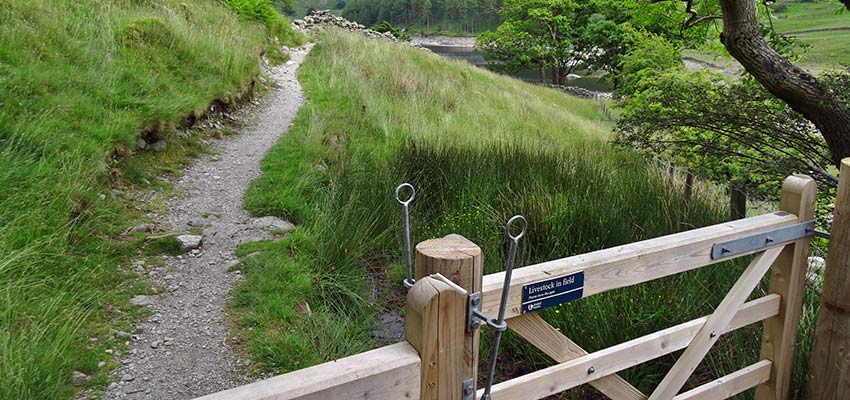
Hiking Terms - Gates
Stile A little step that allows you to easily climb over a fence. They come in different forms.
Kissing gate A gate that opens out to only allow one person through at a time so that two people passing through on either side would have to 'kiss'.
Swing gate A little narrow gate in a fence which has a spring to reset it once open.
Offset gate A gate with an open entrance and two overlapping parts to restrict motorised access.
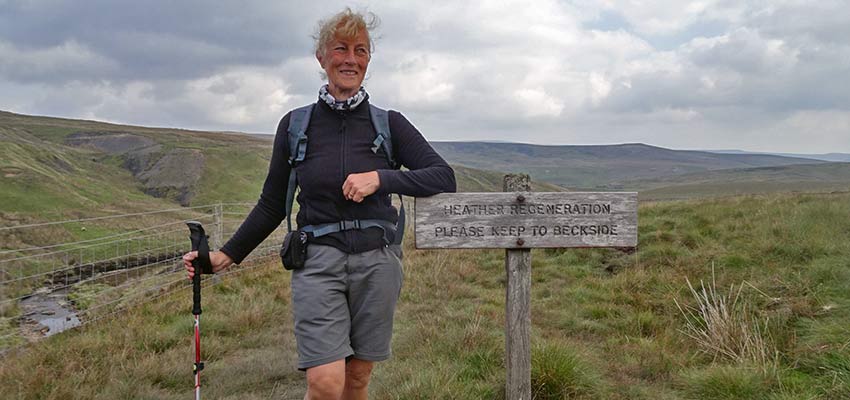
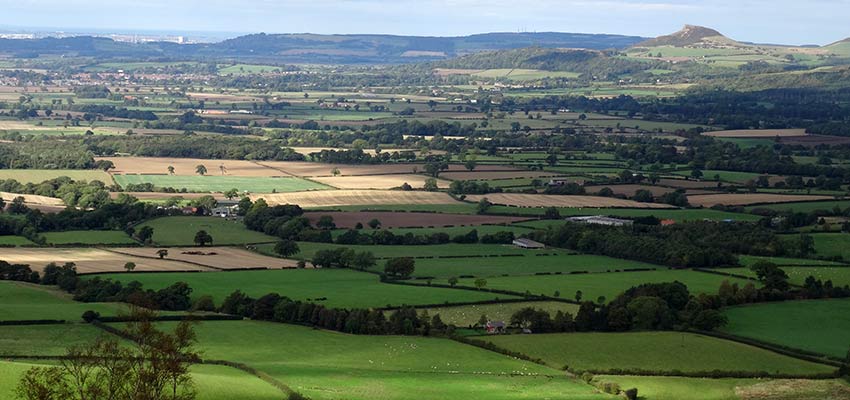
Feature Terminology
Copse/ Coppice/ Plantation A wood or plantation of similar trees, normally quite small.
Hedgerows These are the, often ancient, shrub fences that exist as field boundaries and that can be seen all over the United Kingdom.
Dry stone walls These serve the same purpose as hedgerows, but are made of un-cemented stone. Together with sheep they make up a large part of the Scottish landscape.
Cwm/ Corrie/ Cirque A generally rounded glaciated or post glaciated valle – in the mountains of Wales we use the word ‘cwm’ for this.
Beck or Burn A little stream, unless in spate.
Fell An English word that is probably related to the old Norse word fjall – a fell is a hill or a mountain.
Tarn This is a mountain lake or pool that is generally formed in a cirque that was excavated by a glacier.
Dale A valley, beautiful English dales are found along the Dales Way in the Yorkshire Dales.
Crag An outcrop of rock, or cliff strata.
Dry valley This is a valley cut into chalk or limestone that does not have a permanent stream running through it.
Ben/ Bein This is what the Scots call a mountain, the most famous one being Ben Nevis, which you’ll pass when following the Great Glen Way, West Highland Way and Lochs and Bens cycling trip.
Shoulder Literally the flank or lower sloping part of a hill or mountain, which often facilitates a pass.
Col/ Pass A low point or easier point of access on a shoulder of a hill or mountain which may facilitate an opening for a path or road so that it is easier to travel between valleys.
Breche / Notch A clear break in the rock strata in the mountains which often facilitates a pass for a footpath. A breche or notch is a type of col (see above).
Summit The highest point on a mountain; besides the one summit, there can be several peaks on one mountain, often called ‘false summits’.
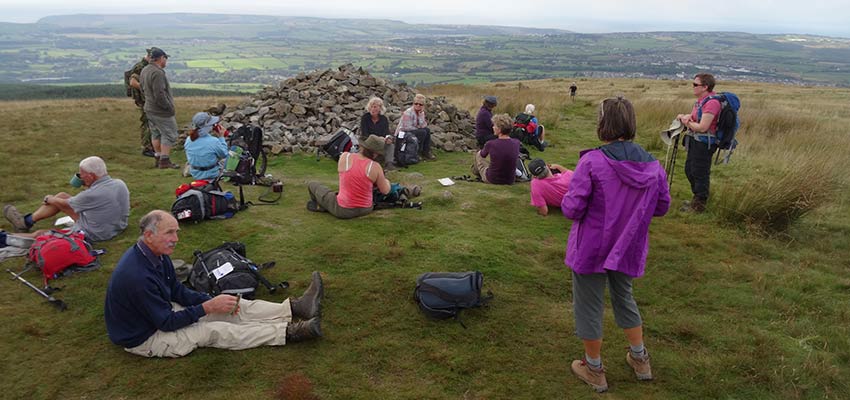
Hiking Terms for Signage
Trig point A triangulation pillar used for surveying. Trig points are usually about 5 foot (150cm) high and made of concrete. Normally you can find these on top of hills and ridges.
Cairn Used for marking the trail, this is a pile of stones that is especially easier to see in bad weather circumstances.
Blaze An indication made with paint on a tree or part of a rock, again to show directions on the trail.
Fingerposts Wooden posts on hills or in fields, which have the waymark on them often via one to four ‘fingers’.
GR/ PR These red-white and yellow-white signs and paint blazes splatter the trails of the grande randonnée routes in France, Spain and Italy.
Wanderweg/ Bergweg Yellow and red-white waymarked trails in Switzerland and Austria. Wanderwegs are usually the lower and easier trails, while a bergweg tends to be used for a mountain path.
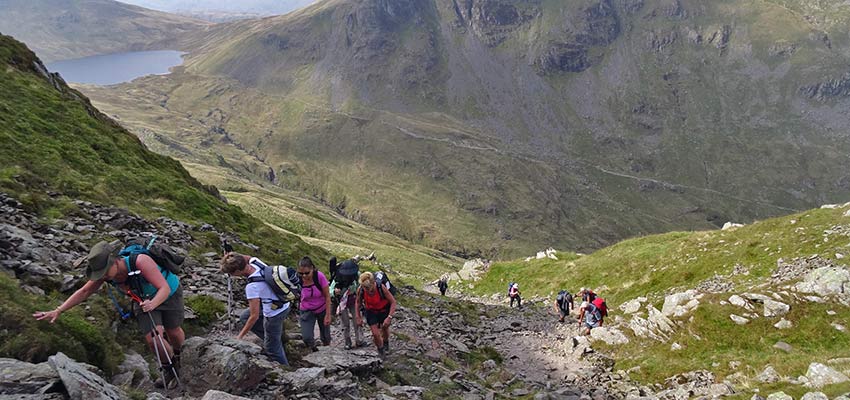
Hiking Terms for Underfoot
Bog A bog usually involves saturated peaty, mossy walking conditions.
Scramble An easy rock climb where hand and footholds are large and a rope is normally not required.
Moor A tract of open uncultivated upland, typically covered with heather, sedge grass and moss.
Scree These are small loose stones that usually cover a slope and can make the walk up a bit harder.
Tarmac If you are American you will know this as asphalt and an Australian may be more familiar to the term sealed road... it covers the ‘better’ roads & paths.
Limestone pavement A strata of limestone on the surface, usually eroded and partially dissolved into blocks and cracks called ‘Clints and Grykes’.
Ridge and furrow This is a medieval farming method of piling up ridges and creating ditches in between. You will see such forms in the pastures of the British countryside.
Sinkhole A hole in the limestone that is created by water solution, some go to great depths into extensive cave systems.
Right to Roam In England and Wales a ‘right to roam’ area is where you can walk freely, such a way may be covered by a signage to indicate your rights. It is a different right to that associated with a footpath that crosses private land.
Bridleway A permissible route to be used by travellers on foot, horse or bicycle, but not motorised vehicles. Keeping this in mind, you may spot the occasional trail biker or green-laner.
Stinging nettles These are mostly found around footpaths and stiles; they will inflict a mild sting if they are brushed against – don’t worry they are nothing like Poison Ivy! (In Latin agonious extremis or - because it ‘urts - urtica).
Have we missed anything? Or do you have extra questions on this? Please feel free to give us a call or send us an email so that we can assist you more. Contact our team of travel experts here.